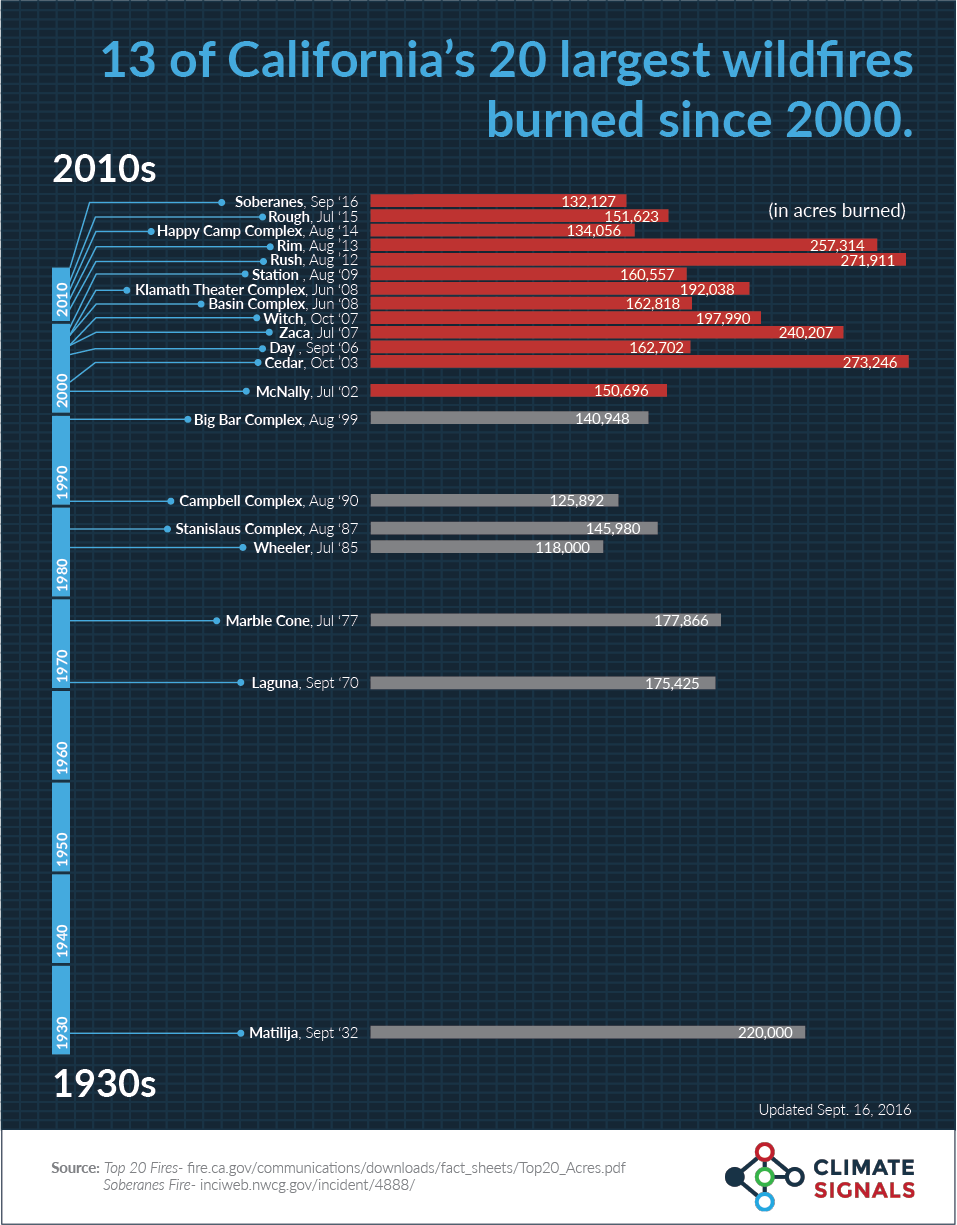

Pixabay
By Molly Taft
The deadly wildfires ripping through Northern California are just the latest in a season of record-defying natural disasters across the country. As the death toll passes 40, reports of Californians hiding in pools as their houses burn and scenes of devastated homes and vineyards add to 2017’s apocalyptic picture of how climate change is impacting America today.
As the Trump administration guts environmental protections and undermines science, California is one of the states leading the way on climate action. Ironically, experts agree the state can expect devastating fires like the ones in Napa to become the new normal. Drier and drier conditions and creeping temperatures in the American Southwest, definitively linked to climate change, serve to create tinderbox conditions for massive, catastrophic fires to explode.
A quick look at two sets of data shows exactly how climate change has impacted California’s susceptibility to wildfires—and what the state can expect as the planet continues to warm.

The past 10 years have been among the hottest years on record. It’s no coincidence that 13 of California’s largest 20 fires by acreage burned have occurred since 2000, and 10 of those in the past decade. According to the National Oceanic and Atmospheric Administration, 2014, 2015 and 2016 are the third, second and first hottest years on record to date, and each of these years hosted its own record-breaking fire in the state.
It’s worth noting that this graphic only covers fires through 2016. The fires in Napa have already burned more than 240,000 acres—surpassing all but three of the fires on this infographic. As of Tuesday, firefighters are still working on 12 blazes still burning in the state.
And, as fires get larger and more destructive, California should expect to pay a heavier cost.

As of press time, the Napa fires have destroyed more than 6,700 homes and businesses in northern California and displaced 100,000 people. Tens of thousands of firefighters have been deployed at all hours to contain the fires since they began last week.
The destruction from these fires is part of a growing trend. As the data in this graph show, the costs of fighting fire in California has skyrocketed over the past 30 years. Dried-out landscapes are fueling more intense, long-lasting and destructive fires, while warmer springs and autumns are extending the fire season, allowing more and more damage to occur. Urban and suburban sprawl into wildland areas prone to fire only increases the risk posed to homes and businesses. A 2013 study found that almost 25 percent of homes in California are at high or extreme risk from wildfires—the highest percentage in the country.
On Oct. 10, two days after the Napa fires began, the Trump administration announced it would repeal the Clean Power Plan—the Obama administration’s signature piece of climate legislation. As extreme weather events become more and more severe and states spend more to contain climate catastrophes, it remains to be seen what will convince those deniers in charge to move towards solutions.
Reposted with permission from our media associate Nexus Media.

 233k
233k  41k
41k  Subscribe
Subscribe 